It's in the truck. I'm ready to go to Toronto. No spills, no thrills, no mishaps. Hope we get a sunny day tomorrow.
You are using an out of date browser. It may not display this or other websites correctly.
You should upgrade or use an alternative browser.
You should upgrade or use an alternative browser.
Brian builds a Corliss
- Thread starter Brian Rupnow
- Start date

Help Support Home Model Engine Machinist Forum:
This site may earn a commission from merchant affiliate
links, including eBay, Amazon, and others.
I'm not sure I've ever built anything with so many bolts in it!! The blue bolt heads are #4 which are 0.110" diameter and the redish ones are #5 which are 0.125" diameter. I'm currently looking for a source for #5 shoulder bolts for the linkage ends but haven't found them yet. I did manage to find some 3mm shoulder bolts and will use them if I have to.
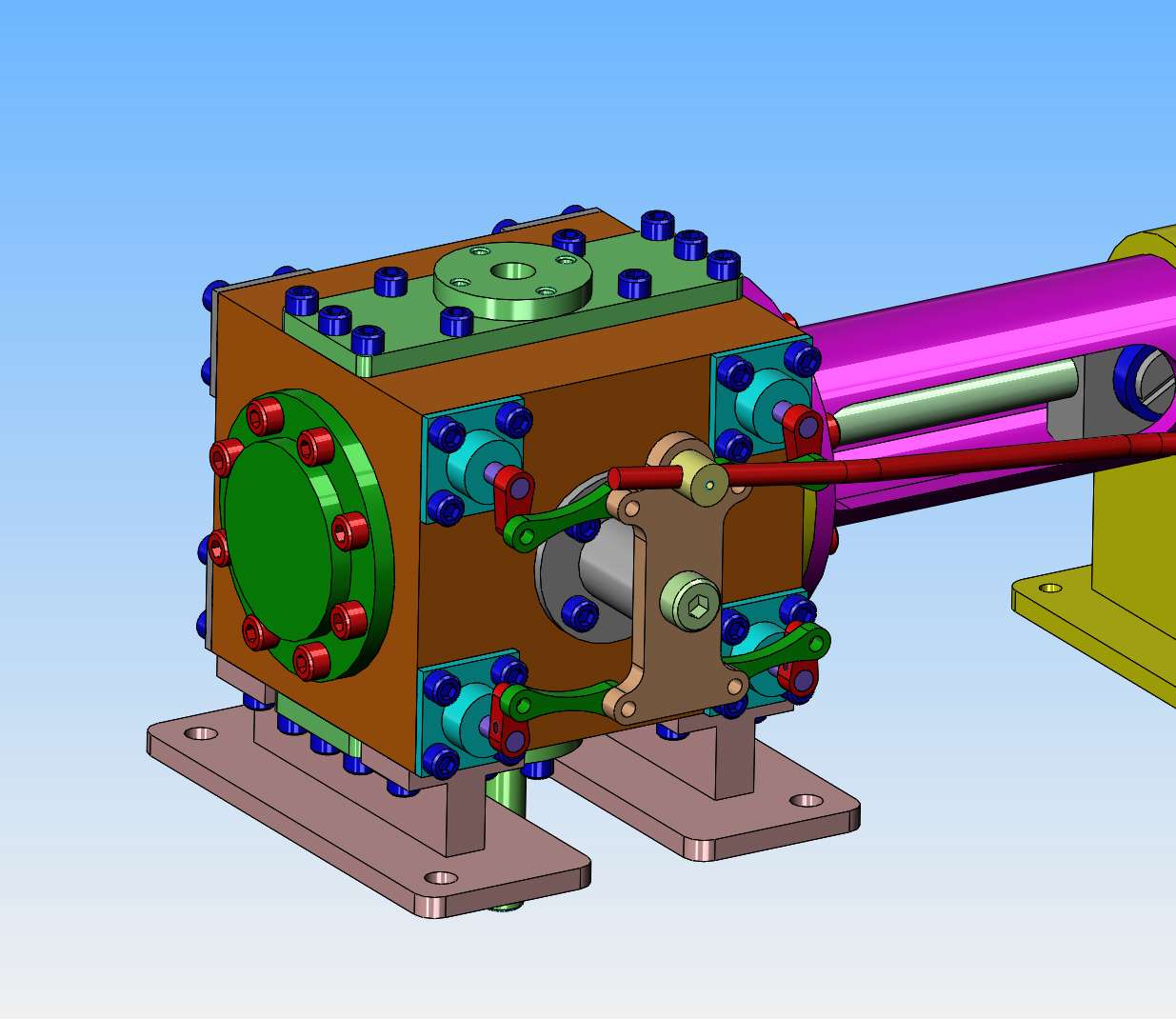

Yes! Repair is much more than replacing a wire that has let the smoke escape.And to all of you who suggested that I fix the problem myself----Do you really think I would go thru this if there was a remote chance that I might be able to fix the electrics on my lathe? In one of my previous lives I tried to fix something like this that I didn't really understand---and it didn't work---and finally when I took it to the people who really did know what they were doing, I was told that my "fixing things" burned out various components and was going to cost twice as much to replace all the crap that my "fix" caused. Old I am--Stupid I'm not!!!
Bill
Reading this thread makes me wonder if there is a price to pay for variable speed control on a lathe. Running a VFD and putting a motor under load at varying speeds must introduce electrical stress into a control system. Electric motors usually run at a constant rated speed. Allowing a motor to do this and varying output speed with gears or belts is probably better. But I would dearly love to have variable speed on my lathe. Still I look longingly at the CX 707. Brian maybe you should trade for one.
https://www.busybeetools.com/products/lathe-12in-x-36in-2hp-gear-head-craftex-cx-cx707.html
https://www.busybeetools.com/products/lathe-12in-x-36in-2hp-gear-head-craftex-cx-cx707.html
Shopgeezer--that is a gear head lathe you are referencing. Great for cutting threads, but very noisy. Yes, I wish I could buy a new lathe every four or five years, but it only gets used for a hobby, it doesn't generate income.----Brian
I ordered the shoulder bolts that I need from McMaster Carr thru my friend who runs a local design/build shop this morning. I took the lathe to Toronto and dropped it off at Busy Bee to be repaired. They will fix it and ship it up to their store outlet in Barrie free of charge and I will pick it up there. I have enough parts to make that aren't lathe dependent to keep me occupied in the meanwhile.

$19.15
$29.95
Competition Engine Building: Advanced Engine Design and Assembly Techniques (Pro Series)
MBC Inc.

$599.00
$649.00
FoxAlien Masuter Pro CNC Router Machine, Upgraded 3-Axis Engraving All-Metal Milling Machine for Wood Acrylic MDF Nylon Carving Cutting
FoxAlien Official

$180.58
Replacement For/Fits A152179 Tractor Water Pump Fits 770 870 970 1070
Astra Tech Global Corp

$26.89
$34.99
Peachtree Woodworking Supply Bowl Sander Tool Kit w/Dual Bearing Head & Hardwood Handle, 42 Pieces Wood Sander Set, 2 Hook & Loop Sanding Disc Sandpaper Assortment, 1/4 Mandrel Bowl Sander
Peachtree Woodworking Supply Inc

$49.95
$55.99
DjuiinoStar Hot Air Stirling Engine Assembly Kit: Spend 30 Minutes to Build Your Own Stirling Engine
djuiinostar

$45.99
Sunnytech Mini Hot Air Stirling Engine Motor Model Educational Toy Kits Electricity HA001
stirlingtechonline

$99.99
AHS Outdoor Wood Boiler Yearly Maintenance Kit with Water Treatment - ProTech 300 & Test Kit
Alternative Heating & Supplies
I managed to get some design time in this afternoon. I modelled the 1/8" and the 3/16" shoulder bolts that I have ordered from McMaster-Carr and added them to the assembly. The 3/16" one is right in the middle of the center pivot and can be used as purchased. The 8 purple colored ones are used at both ends of the green links, and unfortunately the heads have to be turned from 1/4" diameter down to 3/16" diameter to match the size of the green link ends. I have also modified the small end of the red pivot arms to be 3/16" diameter so that everything matches.
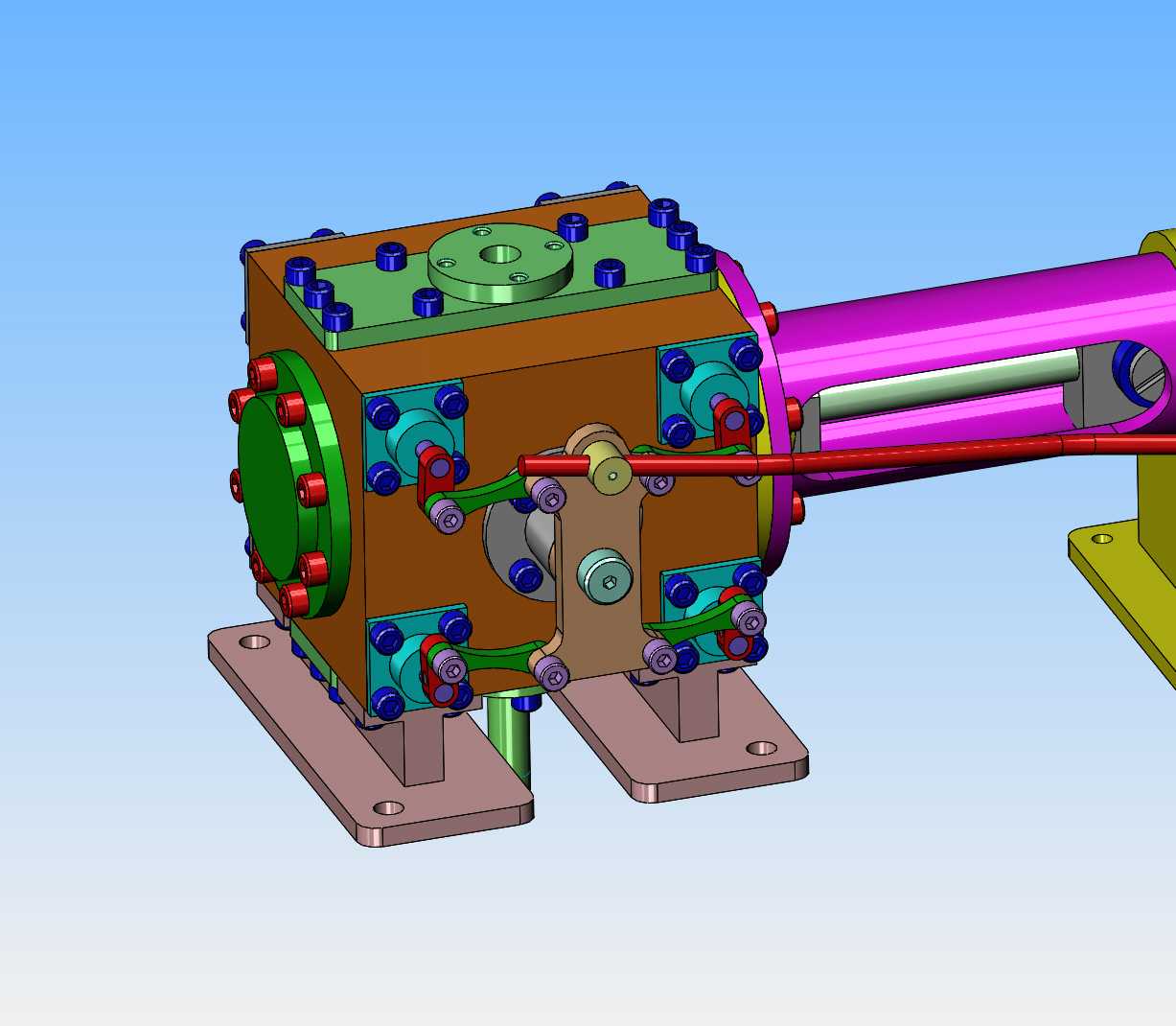

Good stuff Brian! I have had to read up on Corliss valves - attached video links from contributors above have been very instructive.
I look forward to your CAD pictures of the valves, etc.
Plenty of work while the lathe is in the machine hospital.
K2
I look forward to your CAD pictures of the valves, etc.
Plenty of work while the lathe is in the machine hospital.
K2
- Joined
- Sep 5, 2008
- Messages
- 46
- Reaction score
- 13
I managed to get some design time in this afternoon. I modelled the 1/8" and the 3/16" shoulder bolts that I have ordered from McMaster-Carr and added them to the assembly. The 3/16" one is right in the middle of the center pivot and can be used as purchased. The 8 purple colored ones are used at both ends of the green links, and unfortunately the heads have to be turned from 1/4" diameter down to 3/16" diameter to match the size of the green link ends. I have also modified the small end of the red pivot arms to be 3/16" diameter so that everything matches.
Brian, did you know you can download the SolidWorks CAD models of al most everything they sell directly from McMaster? I do that occasionally when I am working on something and need to have the mundane whatchamacallit I bought from McMaster in my model.
I love watching these threads where you are building things and working on shop equipment. Sharing all that stuff makes us all smarter. I loved your thread on making cast iron rings. Thanks!
SteamCHEng--I do know that, but it's just faster for me to click on their 2D pdf and model it myself than to download the 3D image.---Brian
In keeping within my "part a day" mantra, I have just finished the pillow block bearings for my Corliss engine. I had to dig around in my brass drawer to find two pieces large enough to make bearings from, and now that I see them together, I'm pretty sure I have one made from brass and one made from bronze. That's okay.--There's not a big enough visual difference that people will notice it anyways. It feels weird, working in my shop with no lathe in there.
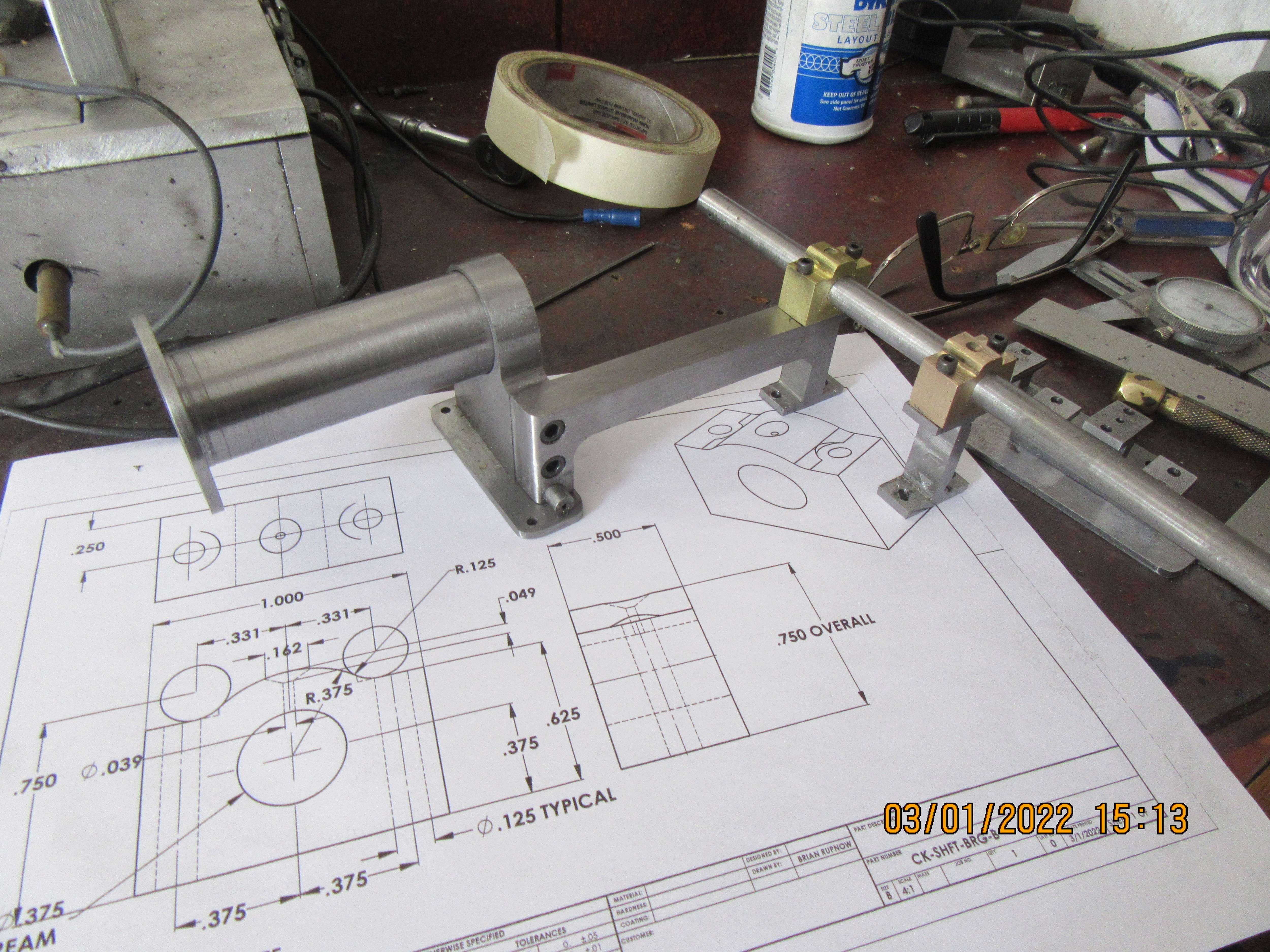

Tomorrow I will make up some hardened filing buttons and round off a bunch of sharp corners, and have one more part finished.
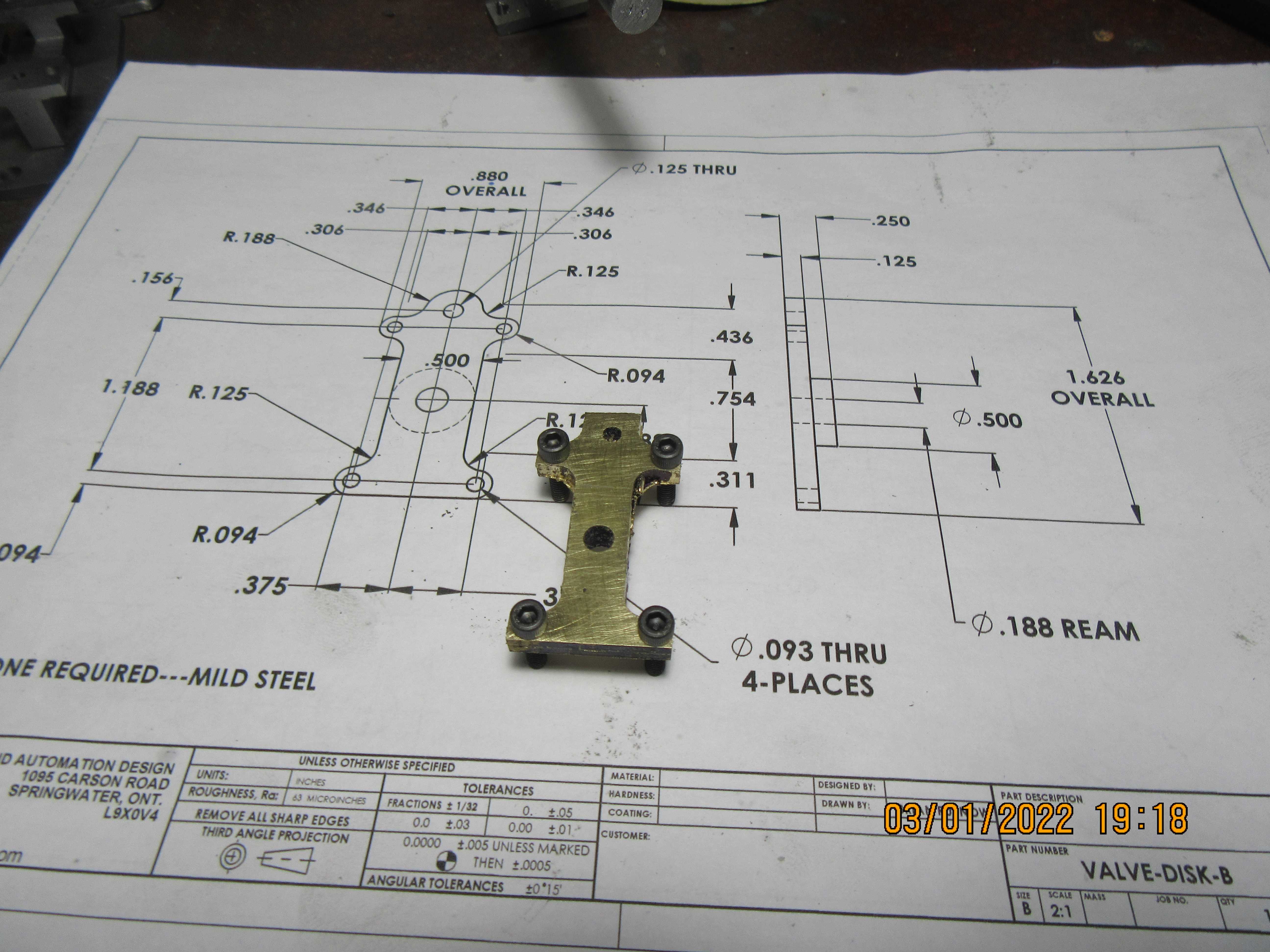

Today I made the four red levers that connect to the steam valves. I wouldn't go so far as to say I hate them worse than snakes, but these are about the smallest things that I can make. That coin in the picture is a Canadian dollar. These links still have to be rounded off on one end, but all the hard work is done.
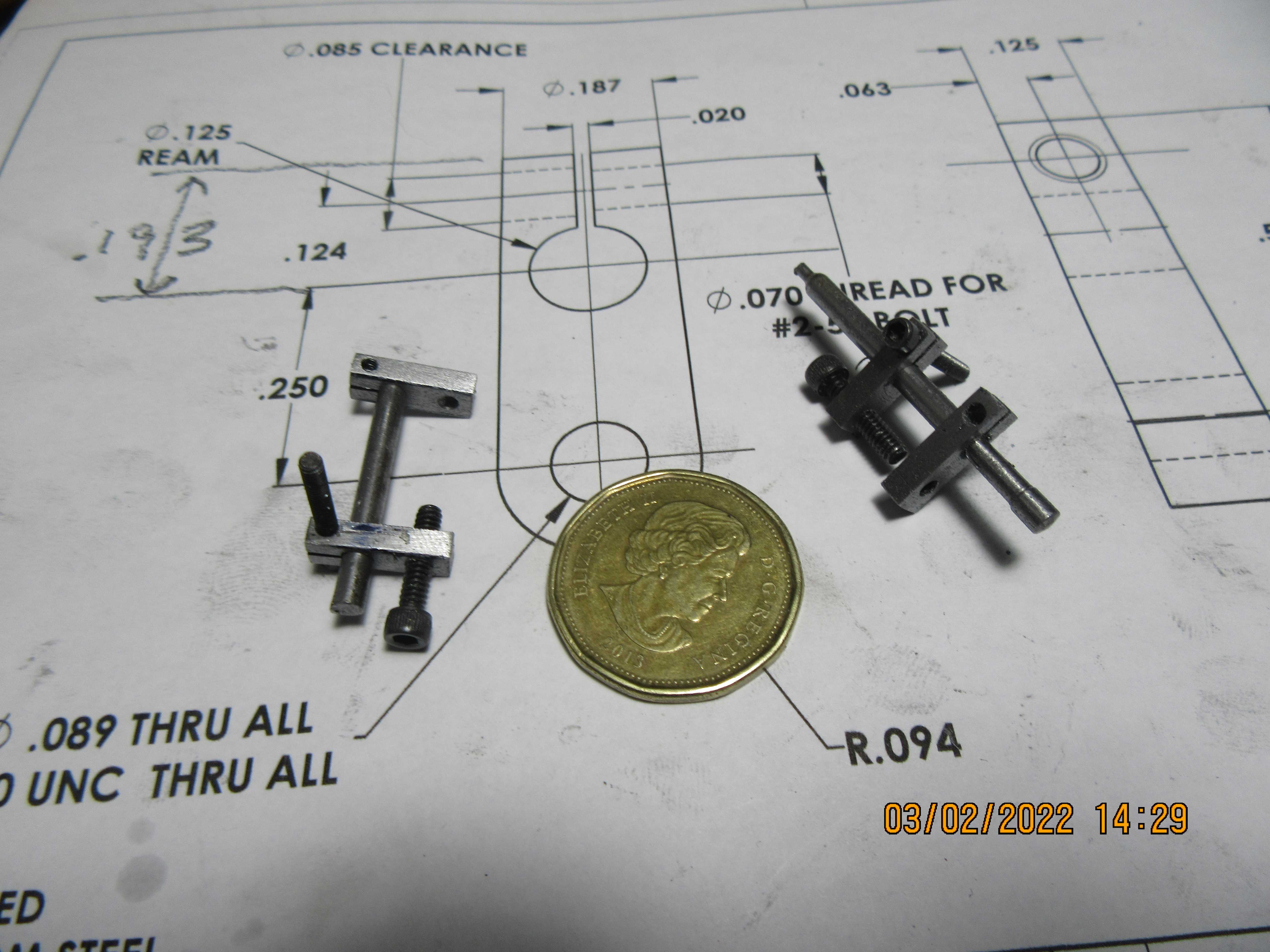

Every day I try to do a little bit. Today I worked on levers and linkages. I also had a great idea for rounding off the ends of levers, etcetera, but it's one of those things that I need my lathe for.


I like your goal of a part per day; keeps the project from stalling out.
I see the Dykem is prominently positioned in the background. One of my favorite tools.
I see the Dykem is prominently positioned in the background. One of my favorite tools.
Yes, that Dykem has saved my butt any number of times. I trust the DRO on my mill, but it's awful nice to see that my cutting tool actually lines up with something I have laid out beforehand.
I do the same and I have avoided creating scrap a few times when I misinterpreted a dimension and see that the first very light pass is not lining up with my scribed lines. And I kind of like the smell of the stuff.
You mentioned you made some very small parts and photographed them next to a Loonie, here are some I made for a small hot air engine I have been working on. Made out of 12L14 on my old Logan and I only scrapped one of the pins and one of the bearing spacers. That's a penny.

You mentioned you made some very small parts and photographed them next to a Loonie, here are some I made for a small hot air engine I have been working on. Made out of 12L14 on my old Logan and I only scrapped one of the pins and one of the bearing spacers. That's a penny.

I've almost reached a point where there aren't many things left to build before I get my lathe back. If I run out of things to make without the lathe, I will start the cylinder block.
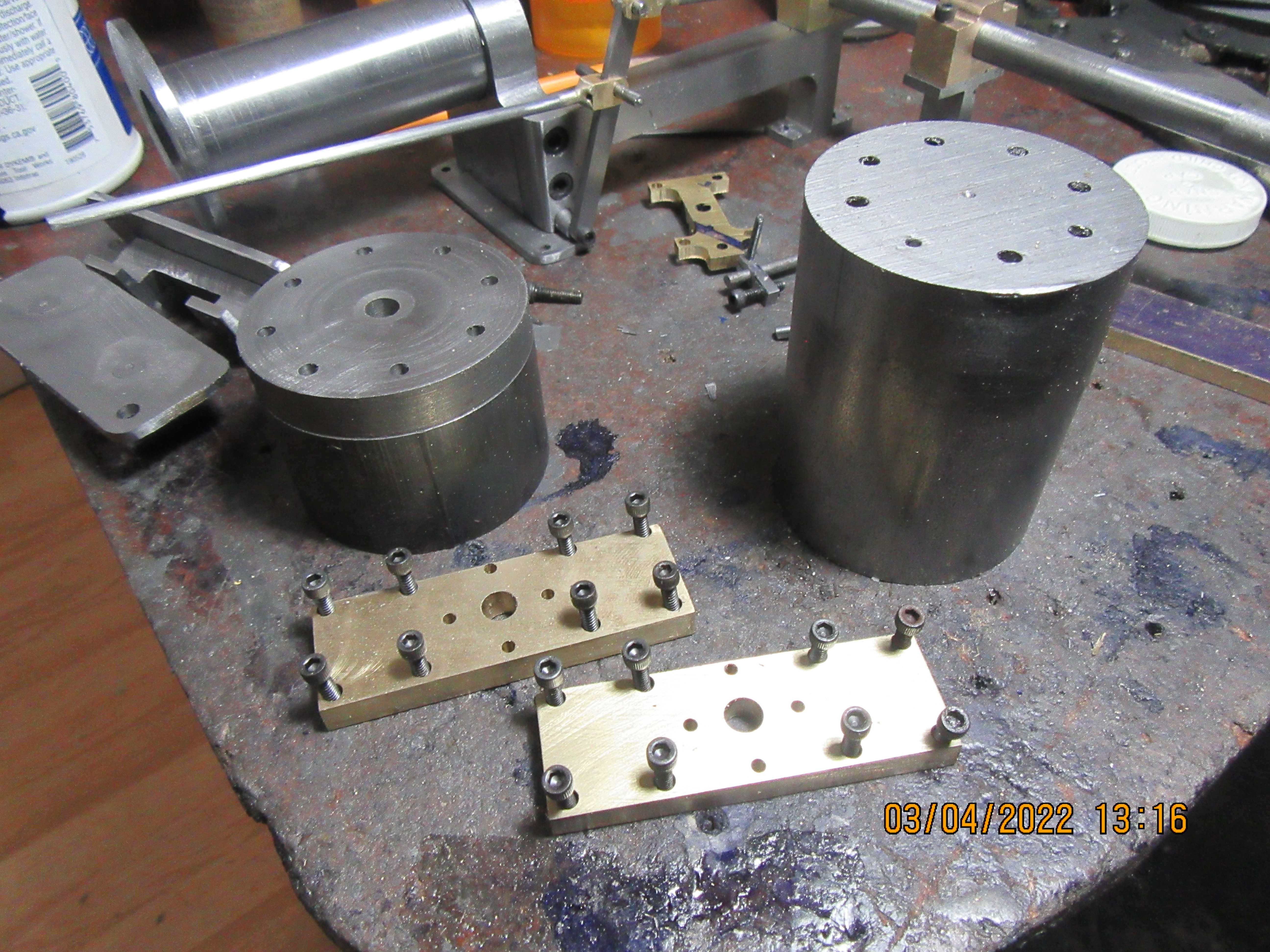

I decided that I really needed to build a wooden base to do this right. The base will be made from 2" x 3/4" pine and will be stained a medium dark brown color and clear-coated. This gets the flywheel about 1/4" above the underside of the wooden base for it to clear the table-top.
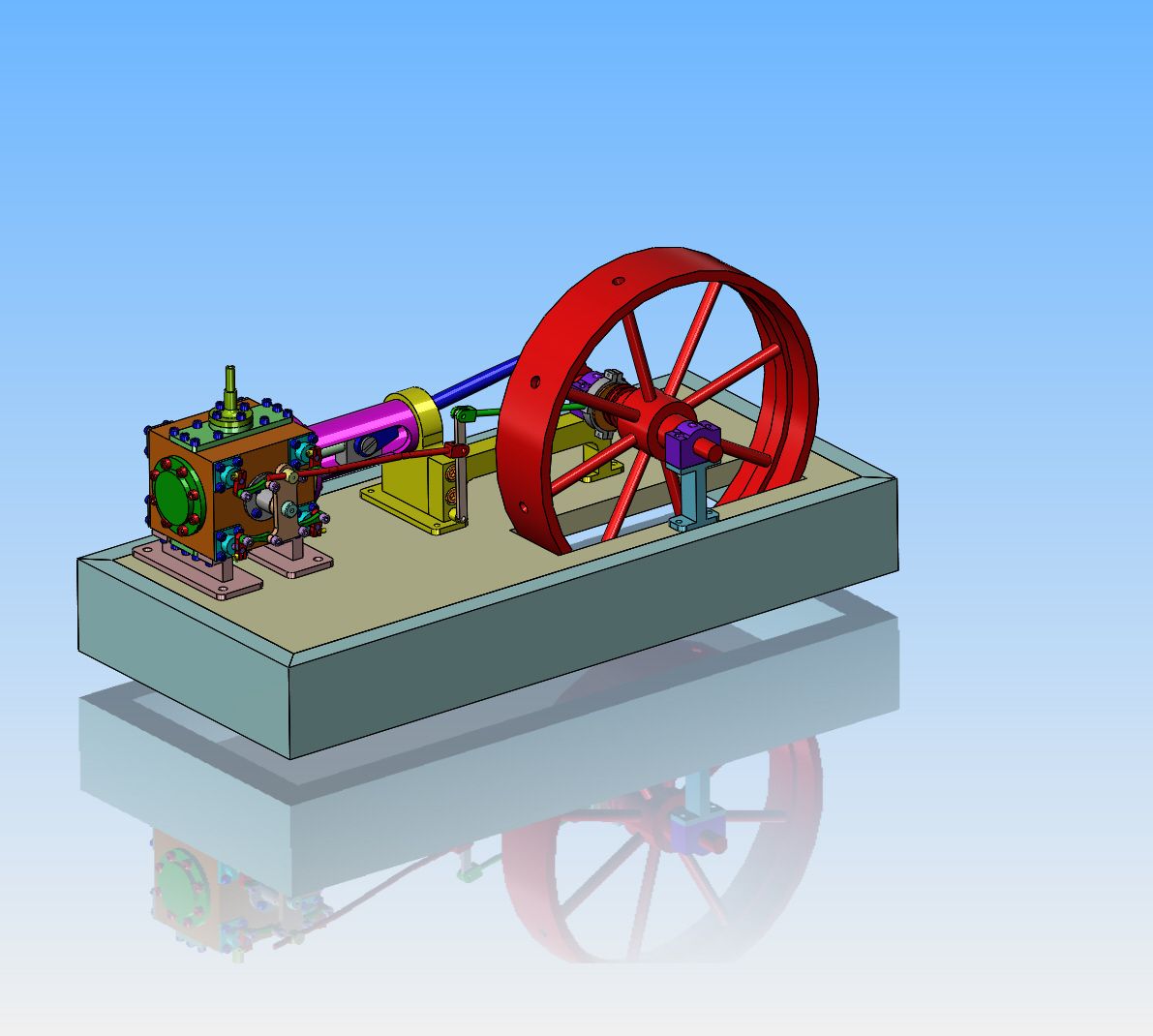

Today I am sorely done up with arthritis. I do take medicine for it, but the day before a rain storm is coming I suffer like Hell!!! I did however, make my engine part for today. This wasn't as big a job as you might think. I designed the base to be made from 6" x 1/2" aluminum bar, so all I really did was cut it to length and cut that big rectangular hole for the flywheel to fit into. I think that on Monday I'm going to start on the big cube that becomes the cylinder. I will be making it from mild steel, and it will have about a zillion #4-40 holes tapped into it. My machinery handbook suggests that the largest tap drill I can use is 0.095" diameter and the actual body of a #4-40 bolt is 0.110" diameter. That doesn't allow for a lot of thread engagement, but then again I'm not going to be towing trucks with this cylinder, and I'm really concerned about breaking taps. I will probably go to my tool supplier and buy four drills and four new taps just for this job.
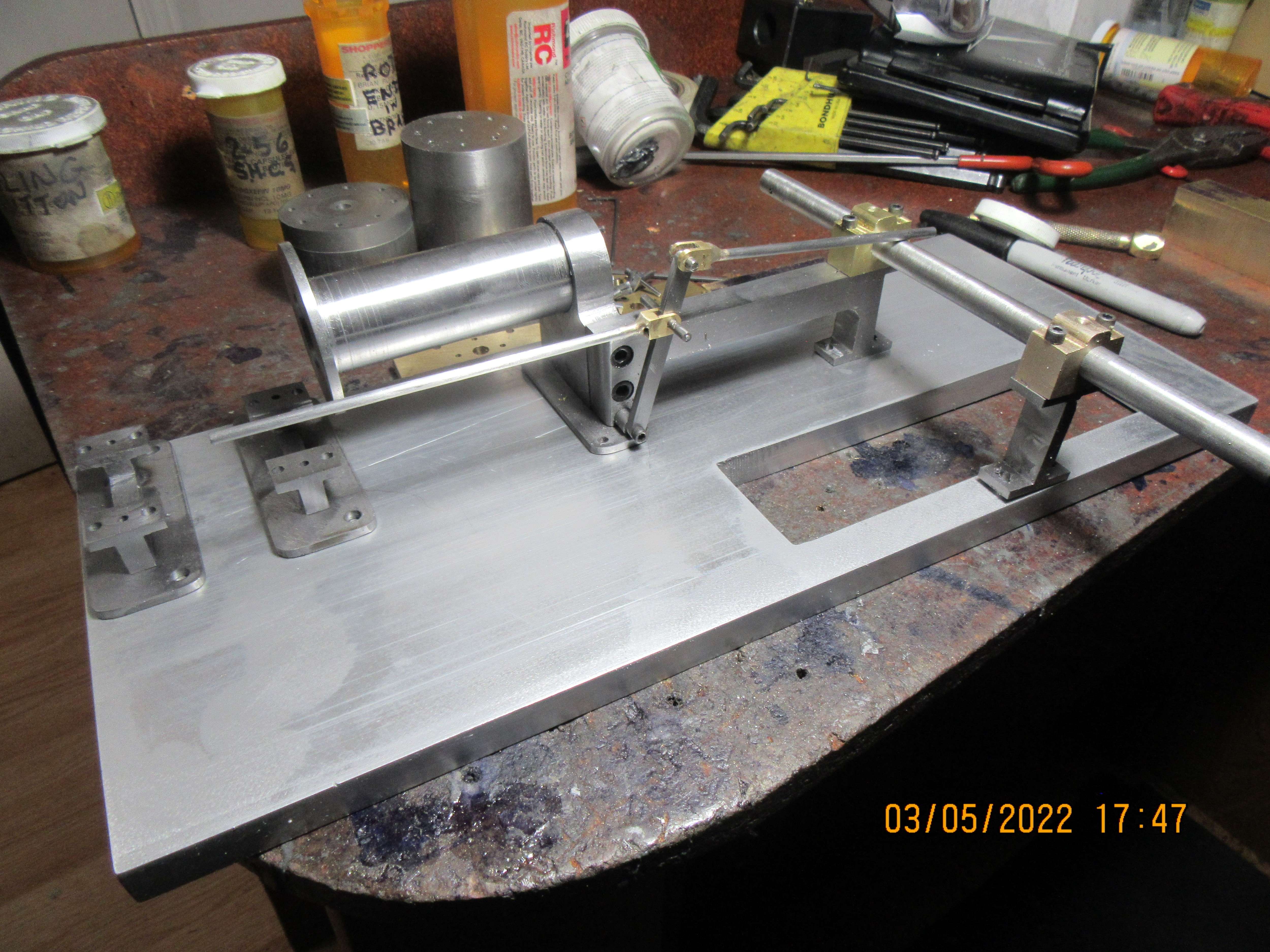

Similar threads
- Replies
- 35
- Views
- 3K
- Replies
- 1
- Views
- 210

















































